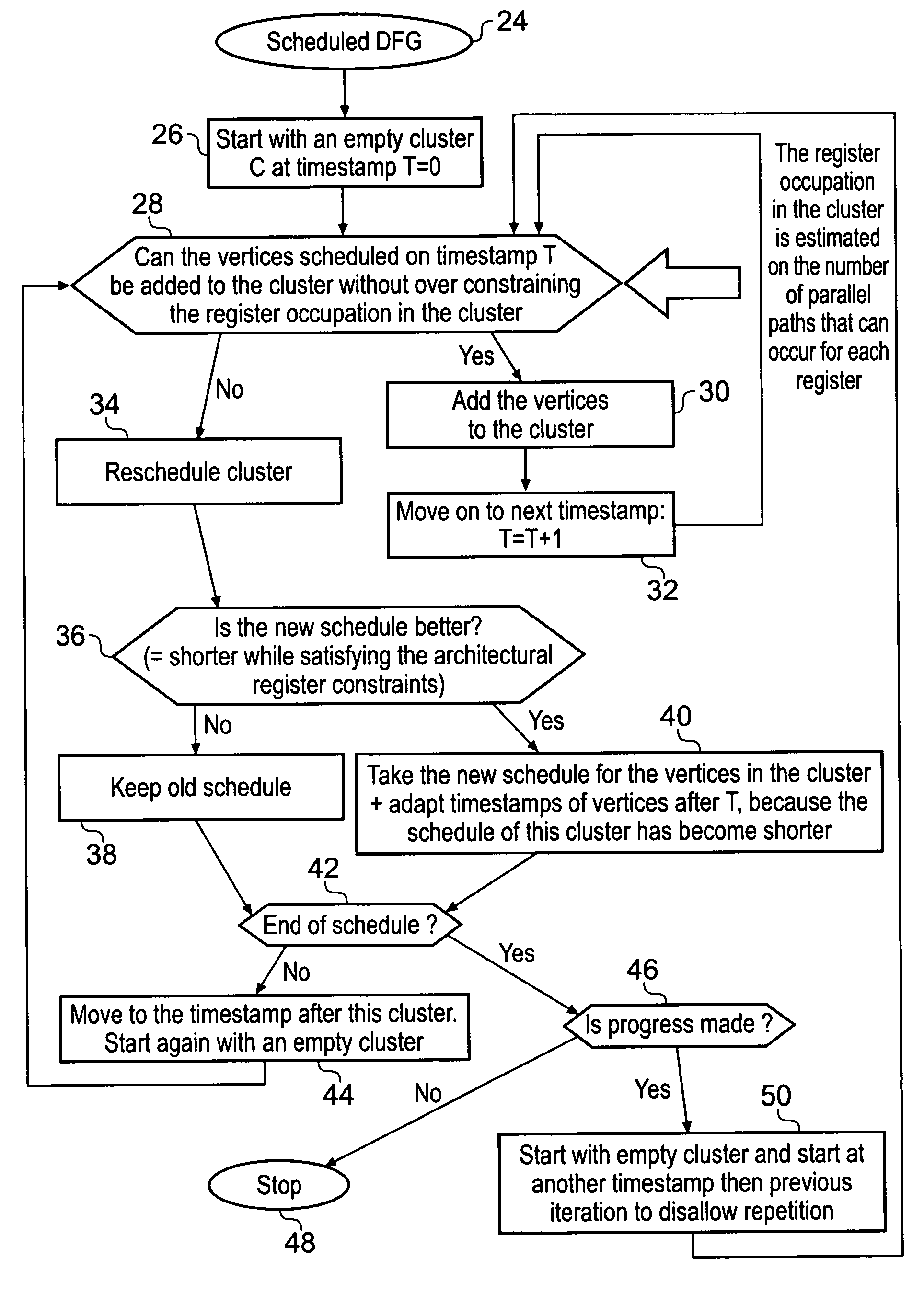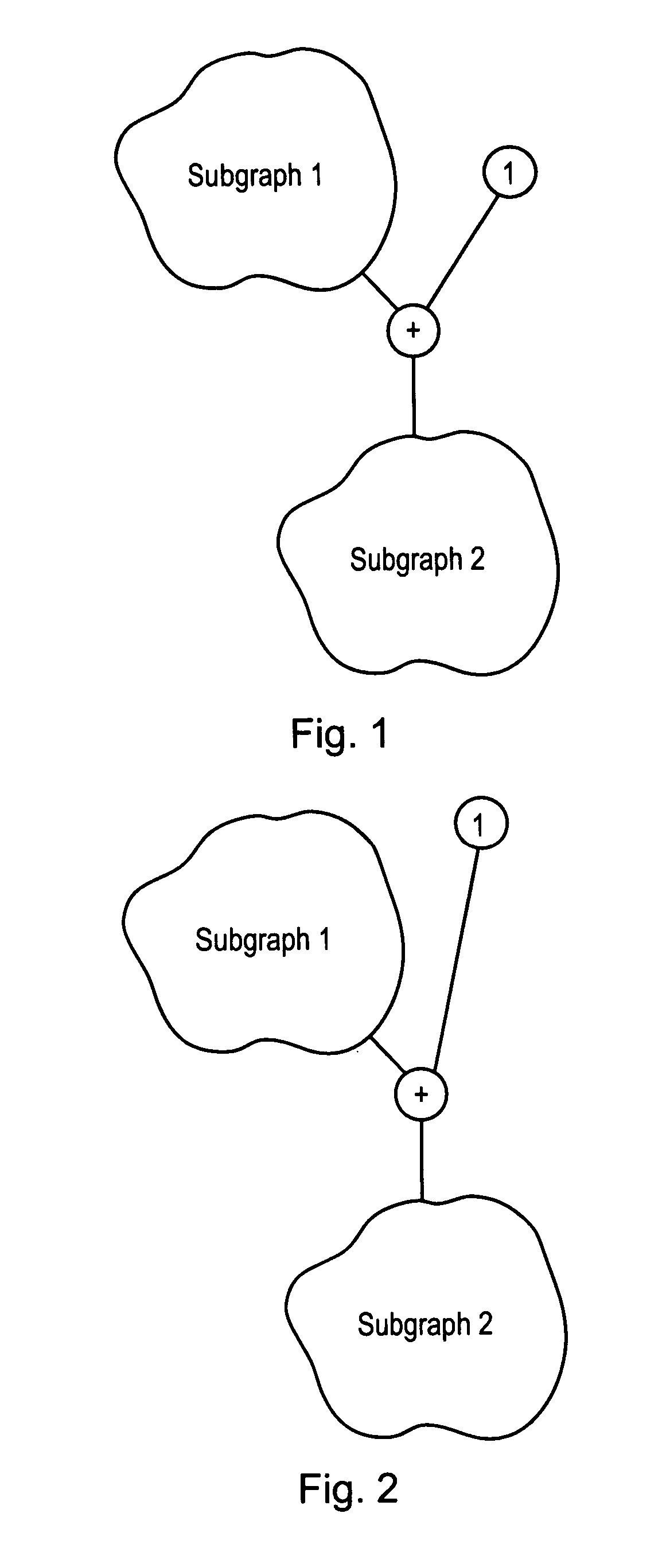Compiling computer programs to exploit parallelism without exceeding available processing resources
a technology of parallel processing and computer programs, applied in the field of compilers, can solve the problems of slow and inefficient spillage to memory, system processing resources being exceeded, and simply scheduling an operation as soon as possible may not be efficient, etc., and achieves high level of parallel processing capability, accurate determination, and general applicability.
- Summary
- Abstract
- Description
- Claims
- Application Information
AI Technical Summary
Benefits of technology
Problems solved by technology
Method used
Image
Examples
Embodiment Construction
[0035]FIG. 1 schematically illustrates a data flow graph representing an addition of an input vertex “1” with the outcome of Subgraph 1. The result is fed into Subgraph 2. The two subgraphs can themselves be of arbitrary form in terms of their internal dataflow graph. The following FIGS. 2 to 7 illustrate different ways in which the vertex “1” may be scheduled.
[0036]FIG. 2 illustrates the outcome after scheduling with a known list scheduler that schedules operations as soon as possible. In this example the vertex generating the value “1” is scheduled on the first possible time stamp. This results in the problem that the vertex “1” is scheduled unnecessarily far away from the “+” vertex which will consume this data as illustrated in FIG. 2. This leads to an unnecessarily long register occupation by the data value from vertex “1”. This may in turn result in the available processing resources being exceeded with undesirable spills and other consequences.
[0037]In FIG. 3, the original da...
PUM
 Login to View More
Login to View More Abstract
Description
Claims
Application Information
 Login to View More
Login to View More - R&D
- Intellectual Property
- Life Sciences
- Materials
- Tech Scout
- Unparalleled Data Quality
- Higher Quality Content
- 60% Fewer Hallucinations
Browse by: Latest US Patents, China's latest patents, Technical Efficacy Thesaurus, Application Domain, Technology Topic, Popular Technical Reports.
© 2025 PatSnap. All rights reserved.Legal|Privacy policy|Modern Slavery Act Transparency Statement|Sitemap|About US| Contact US: help@patsnap.com



